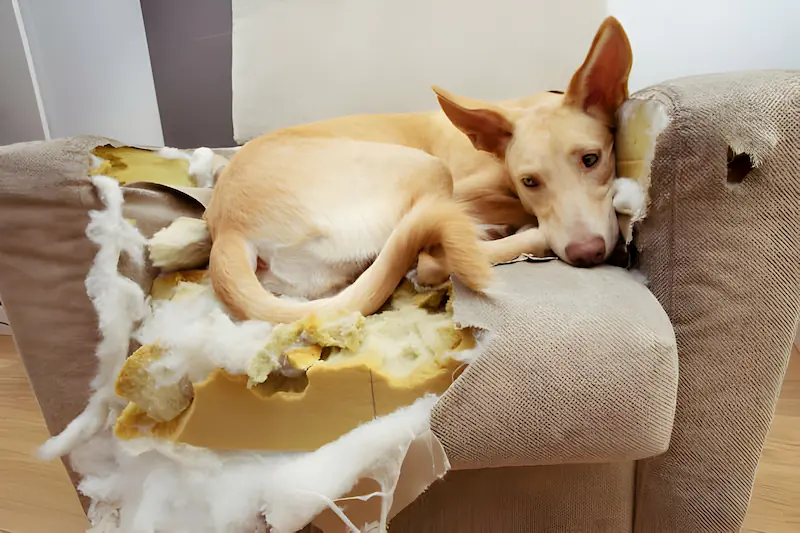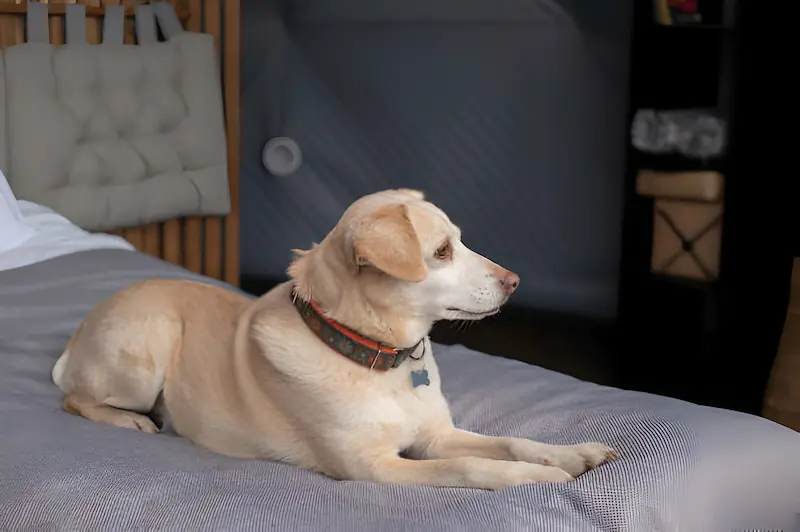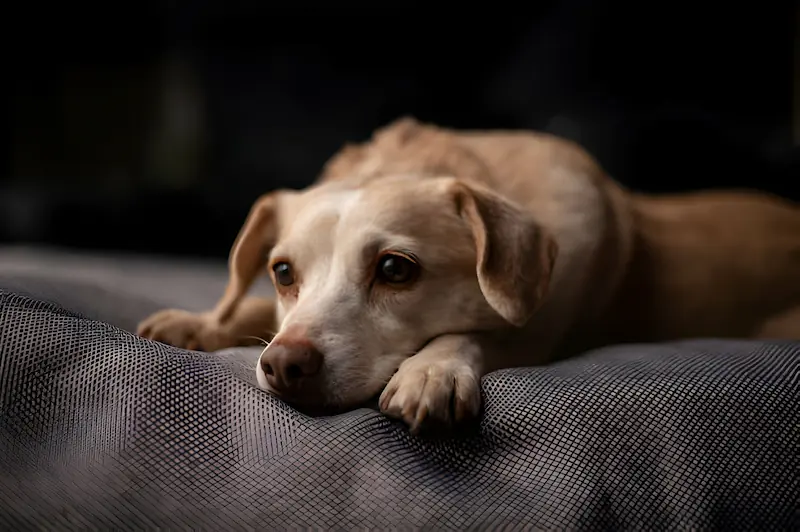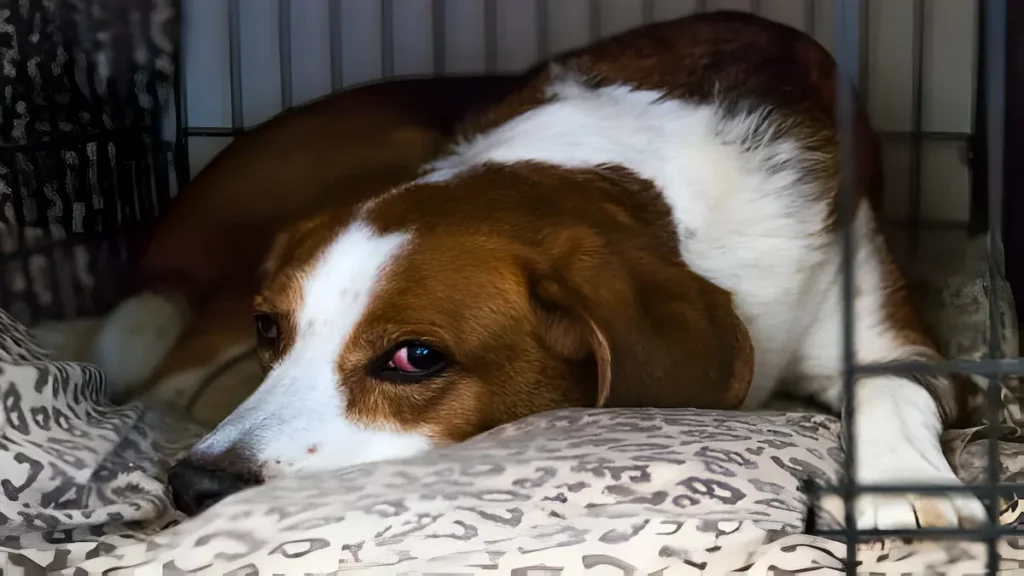Dog separation anxiety is a challenging condition that affects both pets and their owners. In this comprehensive guide, we explore the urgency of addressing separation anxiety swiftly and provide practical strategies to alleviate your dog’s distress.
Understanding Separation Anxiety

Separation anxiety manifests through various behavioral signs, including excessive barking, destructive behavior, and even physical symptoms like vomiting. It often stems from changes in routine, recent rehoming, or traumatic incidents in a dog’s life.
The Urgency of Quick Intervention
Recognizing the urgency of quick intervention is crucial. Separation anxiety not only compromises the well-being of your furry friend but can strain the bond between you and your dog. Swift action is essential to prevent long-term behavioral issues.
Related: Separation Anxiety In Dogs (Causes, Signs, Tips)
Identifying Immediate Triggers
Immediate triggers for separation anxiety vary, but changes in routine, recent rehoming, or traumatic incidents are common culprits. Identifying these triggers quickly allows for targeted intervention strategies.
Quick Intervention Strategies

Positive reinforcement is a key strategy. Rewarding calm behavior, even for short durations, helps create positive associations with alone time. Comforting tools, such as blankets or toys with your scent, offer reassurance.
Establishing a Safe Haven
Creating a safe space involves more than physical comfort. Calming scents or products that mimic a mother’s presence can be beneficial. Gradually acclimating your dog to this space associates it with relaxation.
Gradual Desensitization Techniques
While traditional desensitization is gradual, urgent situations call for a condensed plan. Begin with brief separations, gradually increasing the time. The key is to expose your dog to alone time in manageable doses.
Interactive Distraction Methods
Interactive toys and puzzles not only distract but engage your dog’s cognitive abilities. Opt for toys that dispense treats, keeping your dog mentally stimulated. These activities make the prospect of being alone more appealing.
Utilizing Calming Aids

Calming aids, such as pheromone diffusers or calming music, can be effective tools. Incorporate them into your dog’s environment during alone time to create a serene atmosphere.
Seeking Professional Guidance
In urgent cases, consulting professionals is invaluable. Veterinarians and trainers can offer tailored advice. Short-term medication may be considered, but always under the guidance of a veterinary professional.
Consistency in Routine
Consistency is a cornerstone of success. Dogs thrive on routine, and a predictable schedule helps alleviate anxiety. Consistency extends to your departure and return rituals, providing a sense of security.
Monitoring Progress
Regularly assess your dog’s response to interventions. Positive changes indicate progress, while persistent distress may require adjustments. A flexible approach allows you to tailor strategies to your dog’s unique needs.
Long-Term Strategies for Prevention
As you address urgent needs, consider long-term prevention. Building your dog’s independence and confidence through training and positive experiences fosters resilience against future bouts of separation anxiety.
how to help a dog with separation anxiety
Helping a dog with separation anxiety requires patience, understanding, and consistency. By creating a safe environment, gradually desensitizing your dog to being alone, establishing a routine, using positive reinforcement, and avoiding reinforcing anxious behavior, you can help your dog overcome separation anxiety and lead a happier, more relaxed life.
Recognizing Separation Anxiety:
Signs of separation anxiety in dogs include excessive barking, destructive behavior, and house soiling when left alone. It’s important to differentiate these behaviors from normal reactions to being alone.
Creating a Safe Environment:
Providing a safe and comfortable environment for your dog is essential. This includes a cozy bed, favorite toys, and perhaps a crate if your dog feels secure in one.
Gradual Desensitization:
Help your dog get used to being alone by gradually increasing the time you spend away. Start with short periods and gradually increase them as your dog becomes more comfortable.
Establishing a Routine:
Dogs thrive on routine, so establishing a consistent schedule for feeding, exercise, and alone time can help reduce anxiety. A predictable routine can help your dog feel more secure and less anxious.
Positive Reinforcement:
Reward your dog for calm behavior when alone. Use treats, toys, or praise to reinforce positive behavior and create positive associations with being alone.
Avoiding Reinforcement of Anxiety:
Avoid comforting your dog excessively before leaving or upon returning, as this can reinforce anxious behavior. Instead, practice calm greetings and departures to help your dog feel more at ease.
Seeking Professional Help:
If your dog’s separation anxiety is severe or does not improve with training, it may be necessary to seek help from a veterinarian or animal behaviorist. They can provide guidance on additional training techniques or medications that may help.
how to treat anxiety in dogs
Managing anxiety in dogs requires patience, understanding, and consistency. By creating a calming environment, providing regular exercise and mental stimulation, establishing a consistent routine, using training and behavior modification techniques, and considering nutritional support and professional help when needed, you can help your dog overcome anxiety and lead a happier, more relaxed life.
how to help a puppy with separation anxiety
It’s common to confuse separation anxiety behavior with the fact that your dog is angry at you for leaving him, but that’s not the case. Separation anxiety in puppies occurs when they have not learned the proper strategies for dealing with alone time. So their behavior is based on the fear of being alone. It’s a bit like the puppy equivalent of a human panic attack.
Separation anxiety in dogs is probably one of the most difficult behavioral problems. Being proactive and taking preventive measures can go a long way toward minimizing anxious behavior.
In most cases, puppy separation anxiety begins early. People can become so attached to their new puppy that they are happy when he wants to follow you everywhere, and this bond is essential. However, if you allow your puppy to be with you constantly, he will grow with the expectation of being in your presence every second of the day. Then, suddenly, when they have to go somewhere without them, they don’t understand and become anxious and upset.
Helping Puppies With Separation Anxiety
If you already have a puppy who suffers from separation anxiety, there are a few things you can try to solve the problem.
Understanding the Causes of Separation Anxiety:
Separation anxiety can be triggered by various factors, including changes in routine, past traumatic experiences, or lack of socialization. Understanding these factors can help dog owners address the root cause of the anxiety.
Conclusion about curing dog separation anxiety quickly
Swift intervention is a lifeline for dogs experiencing separation anxiety. By understanding triggers, implementing quick strategies, and maintaining a focus on long-term prevention, you can provide the support your dog needs. Remember, each dog is unique, so be patient, stay attuned to your dog’s cues, and celebrate progress, no matter how small.
Unique FAQs: curing dog separation anxiety quickly
Q: Can separation anxiety be completely cured?
A: While complete cure depends on various factors, swift intervention and consistent strategies can significantly alleviate symptoms.
Q: Should I use medication to treat separation anxiety?
A: Medication should be considered under professional guidance for severe cases; however, it is not a standalone solution.
Q: Can a change in routine trigger separation anxiety?
A: Yes, abrupt changes in routine, such as a sudden shift in the owner’s schedule, can trigger separation anxiety.
Q: How long does it take for separation anxiety to improve?
A: Improvement timelines vary, but with consistent effort, positive changes can often be observed within a few weeks.
Q: Is separation anxiety more common in certain dog breeds?
A: Some breeds may be more prone, but any dog can experience separation anxiety. Individual temperament plays a significant role.



